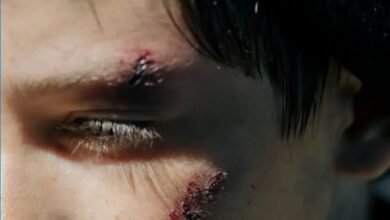Anchorage Lawyer Guide: The Comparative Fault Law in Alaska

It is enough to be in an accident. You are hurt, possibly lost, possibly outraged. And then, when you believe that it can not be more complicated, someone says that there is a chance that you are partly guilty. Not entirely innocent, but not exactly guilty.
That is where the comparative fault law of Alaska enters the picture, and it can change everything about your personal injury claim.
This is one of the things that you will hear most when you are talking to an Anchorage lawyer about your case. It is similar to legal terms, but in fact, it is very simple. Comparative fault means that you can be compensated despite the fact that you are partly to blame for the accident. The catch? The degree of blame that you are found to have will determine the extent to which your compensation will be cut.
Let us make this simple in plain English.
What Is Comparative Fault?
Imagine you’re driving through Anchorage on a snowy evening. You’re doing five mph over the speed limit—not racing, just trying to get home. Suddenly, another driver runs a red light and hits you. They’re clearly in the wrong, but because you were speeding, the court says you were 10% at fault.
If your total damages are $20,000, you’d only be eligible to recover $18,000. That’s how comparative fault works. Your role in the incident doesn’t erase your right to compensation, but it does shrink the check.
Alaska’s Version: Pure Comparative Fault
Every state handles this differently. Some won’t let you recover anything if you’re even slightly to blame.
But Alaska follows a rule called pure comparative fault. It’s one of the more forgiving systems. Under this rule, you can recover damages even if you’re 99% at fault. That remaining 1%? That’s your share of the payout.
So, yes, someone who was primarily responsible for the accident might still win money from the other party. It feels strange, but the law is trying to divide blame as fairly as possible.
How Do Courts Decide Fault?
There’s no calculator. No fixed formula. Assigning fault is more of an interpretation of evidence, testimony, and behavior.
A judge or jury might look at:
- Police reports
- Eyewitness accounts
- Traffic camera footage
- Phone records (were you texting?)
- Skid marks or lack of them
- Expert reconstruction of the crash
They’re piecing together a story. And your share of the blame? It comes from how your actions fit into that story.
Sometimes people think, “Well, if I’m even partly at fault, what’s the point?” That kind of thinking can cost you. Don’t assume your case is lost. Talk it through with someone who knows the system.
Common Scenarios Where Comparative Fault Comes Into Play
These aren’t unusual cases. They’re everyday situations:
- Pedestrian accidents: A person jaywalks, but the driver was speeding. Both share fault.
- Slip and fall claims: A store didn’t clean up a spill, but the customer was wearing worn-out shoes. Split responsibility.
- Car accidents: A driver fails to signal a lane change. The other car was in their blind spot and speeding. Both contributed.
Blame isn’t always clear-cut. And that’s precisely what comparative fault accounts for.
Why This Law Matters in Real Life
This isn’t just legal theory. It affects the money you could receive for:
- Medical bills
- Missed work
- Pain and suffering
- Property damage
Let’s say you were awarded $50,000 in damages but were found 40% at fault. You’d only get $30,000. That’s a significant drop—and that’s why understanding this law is critical before moving forward with any claim.
What an Anchorage Lawyer Might Look For
No two cases are the same. But when fault is shared, lawyers usually focus on a few key questions:
- Did both parties break a traffic law?
- Were any warnings ignored?
- Could the accident have been prevented?
- Is there solid evidence to support your version of events?
An experienced Anchorage lawyer knows how to push back when blame is unfairly shifted. Sometimes insurance companies try to exaggerate your share of fault to reduce payouts. Having someone who knows how these negotiations work can make a difference.
What You Should Do If You’re Worried About Fault
Don’t panic. And don’t admit guilt too quickly.
People often blurt things out right after an accident, like “I’m so sorry!” or “I didn’t see you.” It’s human nature. But these words can be twisted later to suggest fault.
Here’s what helps:
- Get medical attention first.
- Collect as much evidence as possible (photos, witness contacts).
- Don’t give a recorded statement to the other driver’s insurance without legal advice.
- Speak to an Anchorage lawyer who understands how Alaska applies comparative fault.
Even if you think you might share blame, your claim could still be strong. The only way to know for sure is to go through the details carefully.
See Also: Bi LED Lens Technology: The Future of Night Driving from the Best LED Headlight Brand
Final Thoughts
Comparative fault can feel frustrating. It makes personal injury cases messier than people expect. But it also allows for fairness in situations where fault isn’t black and white.
The key takeaway? Being partially at fault doesn’t close the door, not in Alaska.
If you’re dealing with an injury and unsure how your actions might affect your claim, talk to someone who can guide you through it, step by step, without pressure.
There’s often more room to work with than you think.




